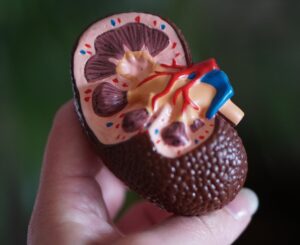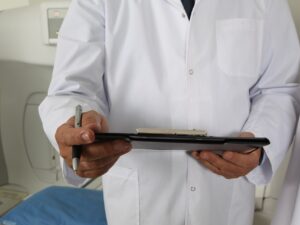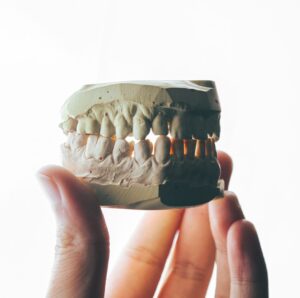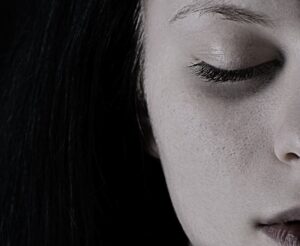Publications
(Български) Проф. Нина Гочева – лектор на XII Национална конференция за редки болести и лекарства сираци
Sorry, this entry is only available in Bulgarian.
(Български) Доц. Гергана Петрова – лектор на XII Национална конференция за редки болести и лекарства сираци
Sorry, this entry is only available in Bulgarian.
(Български) Проф. Савина Хаджидекова – лектор на XII Национална конференция за редки болести и лекарства сираци
Sorry, this entry is only available in Bulgarian.
 Primary hyperammonaemia is a term to describe an elevation of ammonia in blood or plasma due to a defect within the urea cycle, which is the pathway responsible for ammonia detoxification and arginine biosynthesis. Urea cycle disorders (UCDs) are rare diseases caused by genetic defects affecting any of the six enzymes or two transporters that are directly involved in the urea cycle function.The clinical situation is variable and largely depends on the time of onset. Newborns who are often affected by hyper-ammonaemic encephalopathy carry a potential risk of severe brain damage, which may lead to death. Outside the neonatal period, symptoms are very unspecific but most often neurological (with wide variability), psychiatric and/or gastrointestinal. Early identification of patients is extremely important to start effective treatment modalities immediately. The acute management includes detoxification of ammonia, which often requires extracorporeal means such as haemodialysis, and the use of intravenous drugs that work as nitrogen scavengers. Long-term management of patients with UCDs consists of a low-protein diet, which needs to be balanced and supplemented to avoid deficiencies of essential amino acids, trace elements or vitamins and the use of nitrogen scavengers.The reader will find here a brief overview describing the most relevant aspects of the clinical management of UCDs in an attempt to raise awareness for this important group of rare diseases. Read the whole article here.
Primary hyperammonaemia is a term to describe an elevation of ammonia in blood or plasma due to a defect within the urea cycle, which is the pathway responsible for ammonia detoxification and arginine biosynthesis. Urea cycle disorders (UCDs) are rare diseases caused by genetic defects affecting any of the six enzymes or two transporters that are directly involved in the urea cycle function.The clinical situation is variable and largely depends on the time of onset. Newborns who are often affected by hyper-ammonaemic encephalopathy carry a potential risk of severe brain damage, which may lead to death. Outside the neonatal period, symptoms are very unspecific but most often neurological (with wide variability), psychiatric and/or gastrointestinal. Early identification of patients is extremely important to start effective treatment modalities immediately. The acute management includes detoxification of ammonia, which often requires extracorporeal means such as haemodialysis, and the use of intravenous drugs that work as nitrogen scavengers. Long-term management of patients with UCDs consists of a low-protein diet, which needs to be balanced and supplemented to avoid deficiencies of essential amino acids, trace elements or vitamins and the use of nitrogen scavengers.The reader will find here a brief overview describing the most relevant aspects of the clinical management of UCDs in an attempt to raise awareness for this important group of rare diseases. Read the whole article here.
(Български) Доц. Анна Попова – лектор на XII Национална конференция за редки болести и лекарства сираци
Sorry, this entry is only available in Bulgarian.
(Български) Проф. Силвия Чернинкова – лектор на XII Национална конференция за редки болести и лекарства сираци
Sorry, this entry is only available in Bulgarian.
 Juvenile systemic sclerosis (JSSc) is a rare disease of childhood and currently no international consensus exists with regard to its assessment and treatment. This SHARE (Single Hub and Access point for paediatric Rheumatology in Europe) initiative, based on expert opinion informed by the best available evidence, provides recommendations for the assessment and treatment of patients with JSSc with a view to improving their outcome. Experts focused attention not only on the skin assessment but also on the early signs of internal organ involvement whose proper treatment can significantly affect the long-term outcome. A score for disease severity is proposed in order to perform a structured assessment of outcome over time but a validation in a wider patient population is recommended. Finally, a stepwise treatment approach is proposed in order to unify the standard of care throughout Europe with the aim to reduce morbidity and mortality in this disease. Read the whole article here.
Juvenile systemic sclerosis (JSSc) is a rare disease of childhood and currently no international consensus exists with regard to its assessment and treatment. This SHARE (Single Hub and Access point for paediatric Rheumatology in Europe) initiative, based on expert opinion informed by the best available evidence, provides recommendations for the assessment and treatment of patients with JSSc with a view to improving their outcome. Experts focused attention not only on the skin assessment but also on the early signs of internal organ involvement whose proper treatment can significantly affect the long-term outcome. A score for disease severity is proposed in order to perform a structured assessment of outcome over time but a validation in a wider patient population is recommended. Finally, a stepwise treatment approach is proposed in order to unify the standard of care throughout Europe with the aim to reduce morbidity and mortality in this disease. Read the whole article here.
 Osteogenesis imperfecta (OI), also known as “brittle bone disease”, is a rare genetic disorder of the skeleton, whose most benign form I corresponds to autosomal dominant mutations in the genes encoding type I collagen (COLA1, COLA2). Several associated skeletal manifestations are often observed but, surprisingly, while dentin defects often reflect genetic bone disorders, about half of OI patients have no obvious oral manifestations. Here, we investigated the collagen, mineral and mechanical properties of dentin from deciduous teeth collected from patients with mild form of OI and displaying no obvious clinical signs of dentinogenesis imperfecta. For the first time, an increase in the hardness of OI dentin associated with an increase in mineral content compared to healthy patients was reported. In addition, OI altered the tissue characteristics of the dentin-enamel junction but the interfacial gradient was preserved. The impact of changes in molecular structure due to mutations in OI was assessed by Raman microspectroscopy. Our results highlighted a change in the hydroxyproline-proline ratio in direct association with collagen mineralization. Our findings suggest that the evaluation of teeth could be an important aid for mild types of OI that are often difficult to diagnose clinically and provide experimental evidence that hydroxyproline content should be considered in future studies on collagen-based biomaterials. Read the whole article here.
Osteogenesis imperfecta (OI), also known as “brittle bone disease”, is a rare genetic disorder of the skeleton, whose most benign form I corresponds to autosomal dominant mutations in the genes encoding type I collagen (COLA1, COLA2). Several associated skeletal manifestations are often observed but, surprisingly, while dentin defects often reflect genetic bone disorders, about half of OI patients have no obvious oral manifestations. Here, we investigated the collagen, mineral and mechanical properties of dentin from deciduous teeth collected from patients with mild form of OI and displaying no obvious clinical signs of dentinogenesis imperfecta. For the first time, an increase in the hardness of OI dentin associated with an increase in mineral content compared to healthy patients was reported. In addition, OI altered the tissue characteristics of the dentin-enamel junction but the interfacial gradient was preserved. The impact of changes in molecular structure due to mutations in OI was assessed by Raman microspectroscopy. Our results highlighted a change in the hydroxyproline-proline ratio in direct association with collagen mineralization. Our findings suggest that the evaluation of teeth could be an important aid for mild types of OI that are often difficult to diagnose clinically and provide experimental evidence that hydroxyproline content should be considered in future studies on collagen-based biomaterials. Read the whole article here.
 Genodermatoses are heritable skin diseases that can cause significant morbidity and mortality. Most of them show characteristic cutaneous findings. Genodermatoses can be associated with extracutaneous system abnormalities. Diagnosing hereditary skin disorders is still a challenging task due to their rarity and diversity, due to diseases evolving over many years, and the initial manifestations not always being diagnostic; therefore, ongoing evaluation and surveillance is often required to make the accurate diagnosis. The algorithm for the diagnosis depends on a combination of thorough clinical and family history clinical examination, laboratory findings, consultation of multiple medical specialists, and molecular analysis. Diagnostic testing targeted at differentiation of similar genodermatoses may be required. Recognition is crucial for the initiation of the treatment for skin manifestations and detection of other extracutaneous abnormalities, including malignancy. Diagnostic accuracy and molecular diagnosis may help in providing a template for ongoing management, testing, and education and prognostication for families of children with genodermatoses. Read the whole article here.
Genodermatoses are heritable skin diseases that can cause significant morbidity and mortality. Most of them show characteristic cutaneous findings. Genodermatoses can be associated with extracutaneous system abnormalities. Diagnosing hereditary skin disorders is still a challenging task due to their rarity and diversity, due to diseases evolving over many years, and the initial manifestations not always being diagnostic; therefore, ongoing evaluation and surveillance is often required to make the accurate diagnosis. The algorithm for the diagnosis depends on a combination of thorough clinical and family history clinical examination, laboratory findings, consultation of multiple medical specialists, and molecular analysis. Diagnostic testing targeted at differentiation of similar genodermatoses may be required. Recognition is crucial for the initiation of the treatment for skin manifestations and detection of other extracutaneous abnormalities, including malignancy. Diagnostic accuracy and molecular diagnosis may help in providing a template for ongoing management, testing, and education and prognostication for families of children with genodermatoses. Read the whole article here.
